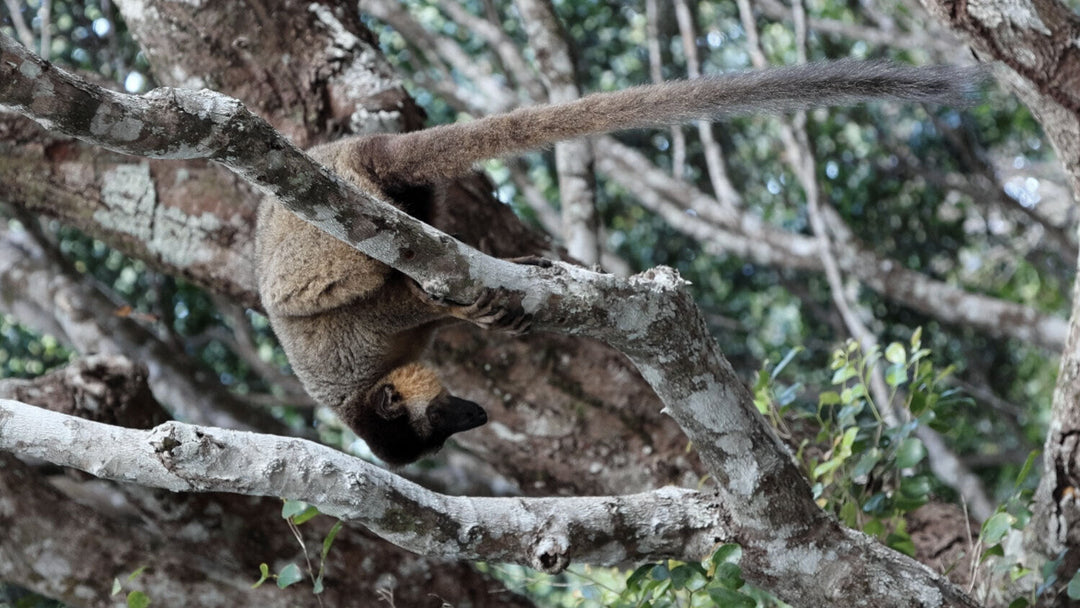SafariSpy: Rare rabbits of the Karoo cavorting in the daylight
As our SafariSpy camera has ventured out into South Africa we have met some great people using camera traps to conserve wildlife.
This guest blog is by Christy Bragg, Drylands Conservation Programme Manager at the Endangered Wildlife Trust, South Africa.
One of the most amazing things about the simple camera trap is the vast amount of biological information that comes as a ‘by-catch’ (so to speak) with the image! The Endangered Wildlife Trust runs the Riverine Rabbit Project in the Karoo, a semi-desert ecosystem with unique and rich biodiversity. The project has been coordinating the conservation of the Critically Endangered riverine rabbit (Bunolagus monticularis) for the last fifteen years. One of our key concerns has always been how to count these rare, elusive and nocturnal bunnies and this has been an uphill battle from day one.

A rare riverine rabbit on the move on a farm road
The riverine rabbit is a sensitive, slow-breeding rabbit that lives on the riverine shrublands on the narrow floodplains surrounding Karoo rivers. These shrublands are actually more like thorn thickets, as Karoo shrubs are bred hard and thorny! The rabbit is (mostly) nocturnal and occurs predominantly on privately-owned farmland in the remote wildernesses of the dry Karoo plains of South Africa.
Therefore, counting them initially meant organizing massive people-intensive surveys, where a line of people would walk through miles and miles of thorny vegetation, shouting “konyn, konyn”[rabbit, rabbit] in the hopes of flushing these bunnies and getting an id (believe me, identifying the speeding-away bum of a bunny in the bush is not easy).
Unfortunately due to government budget cuts these surveys were not possible anymore and were in any case not a valuable tool to census rabbits as they were not easily repeatable. Therefore the Riverine Rabbit Project team invested a lot of fundraising effort into raising money for camera traps. Now that we have 34 Bushnell camera traps a world of opportunities has opened up to us.

A supposedly nocturnal Critically Endangered Riverine Rabbit enjoying the sunlight of the morning
Firstly we have already undertaken a research study with the camera traps in collaboration with the University of Stellenbosch on the activity patterns of the rabbit across seasons and moonlight patterns, and the wealth of biological information has improved our knowledge tremendously. For example these rabbits are out and about at daybreak a lot during summer, and they also show different foraging activities across different seasons, utilizing grass in summer, shrub forage in winter.
We have also managed to capture an ‘awwww-cute’ moment of a baby bunny on camera; this gives insight into breeding seasons, and, using the video function, we have caught interesting behavioural activity, such as predator scanning behaviour. This video was amazing to see – basically a rabbit going up onto his back feet and standing dead still, searching the horizon after a bird’s alarm call and the only movement he made was the twitching and continual swivelling of his radar ears.

Doekvoet (meaning 'not found') shows his distinct brown tail and fluffy brown paws
We have also just started a big research project with a University of Cape Town student who is investigating the use of camera trap grids as a demographic monitoring tool for this species. This is no easy task given that rabbits create statistical issues, being rare, occurring in dense habitat and being indistinguishable from each other, but we have some amazing and innovative people working on this, so by this time next year I will be able to write back to NatureSpy and tell you how to count rare rabbits in the Karoo!
Find out more:
IUCN Red List: Riverine Rabbit
Stay tuned for more SafariSpy adventures!


